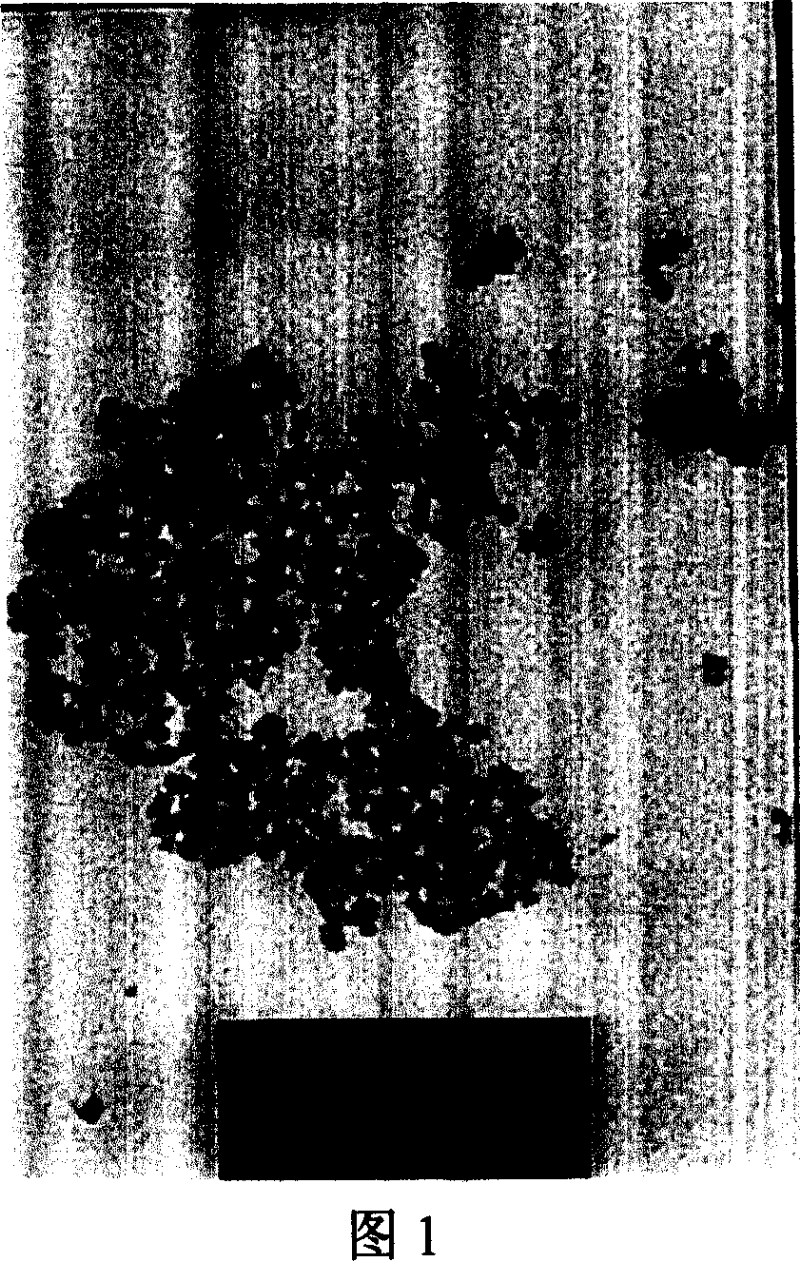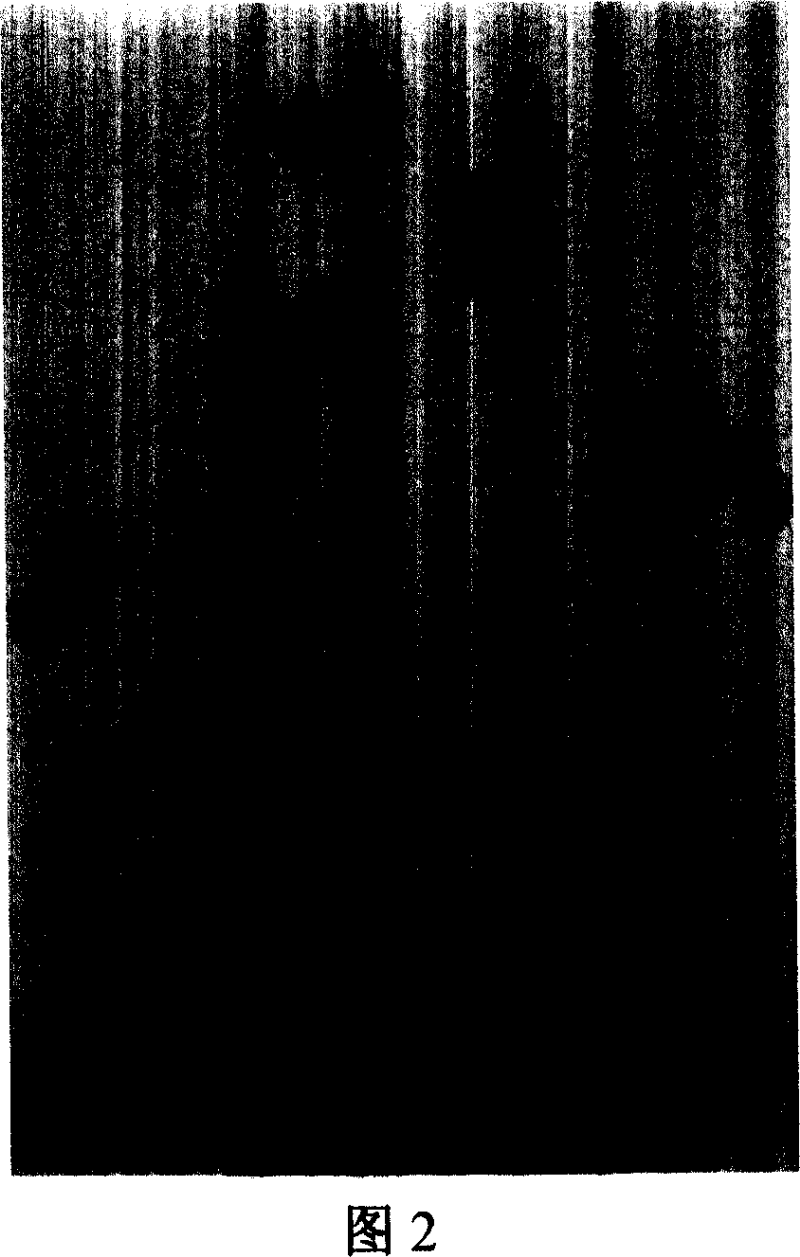Nanometer elemental selenium coupled with liquid amino acid and the method for preparing and preserving the same
A technology of nano-element and amino acid, applied in the direction of drug combination, sulfur/selenium/tellurium active ingredient, heterocyclic compound active ingredient, etc., can solve problems such as unsolved single amino acid coupling, unfavorable dosage form development, and limited medical application, etc., to achieve The effect of low production cost, strong health care effect, and expanded application range
- Summary
- Abstract
- Description
- Claims
- Application Information
AI Technical Summary
Problems solved by technology
Method used
Image
Examples
Embodiment 1
[0020] At normal temperature and pressure (15-35°C, 1 standard atmospheric pressure), the concentration is 3mol L -1 Each 15ml of the glycine solution was added to five 50ml volumetric flasks respectively, and then the concentration was 0.1mol L -1 Add 1ml of each vitamin C solution to these 5 volumetric flasks, shake gently to mix them well, and then add them dropwise with a concentration of 4×10 -4 mol L -1 0.5, 1, 2, 4, 8ml of the selenium dioxide solution, shake gently while adding dropwise, wait until the red color does not change, set the volume to 50ml with twice distilled water, and a series of selenium concentrations of 4, 8, 16 , 32, 64 μmol L -1 target product. Measured by a BI9000AT laser scattering instrument (American Brookhaven). The average particle size of the nanoparticles in the product is in the range of 30-100nm, see attached table 1. The product can be stored in the form of sol in aqueous solution at 2-10°C.
[0021] Selenium concentration ...
Embodiment 2
[0023] At normal temperature and pressure (15-35°C, 1 standard atmospheric pressure), the concentration is 3mol L -1 Each 15ml of the proline solution was added to five 50ml volumetric flasks respectively, and then the concentration was 0.1mol L -1 Add 1ml of each vitamin C solution to these 5 volumetric flasks, shake gently to mix them well, and then add them dropwise with a concentration of 4×10 -4 mol L -1 0.5, 1, 2, 4, 8ml of selenium dioxide solution, shake gently while adding dropwise, wait until the red color no longer changes, set the volume to 50ml, and a series of selenium concentrations of 4, 8, 16, 32, 64μmol·L -1 target product. Measured by a BI9000AT laser scattering instrument (American Brookhaven). The average particle size of the nanoparticles in the product is in the range of 20-100nm, see attached table 2. The product can be stored in the form of sol in aqueous solution at 2-10°C.
[0024] Selenium concentration
Embodiment 3
[0026] At normal temperature and pressure (15-35°C, 1 standard atmospheric pressure), the concentration is 3mol L -1Add 7.5ml each of the lysine solution and arginine solution to five 50ml volumetric flasks respectively, and then take the concentration to be 0.1mol L -1 Add 1ml of each vitamin C solution to these 5 volumetric flasks, shake gently to mix them well, and then add them dropwise with a concentration of 4×10 -4 mol L -1 0.5, 1, 2, 4, 8ml of sodium selenite solution, shake gently while adding dropwise, wait until the red color does not change, set the volume to 50ml, and a series of selenium concentrations of 4, 8, 16, 32 , 64 μmol L -1 target product. Measured by a BI9000AT laser scattering instrument (American Brookhaven). The average particle size of the nanoparticles in the product is in the range of 30-140nm, see attached table 3. The product can be stored in the form of sol in aqueous solution at 2-10°C.
[0027] Selenium concentration
PUM
 Login to View More
Login to View More Abstract
Description
Claims
Application Information
 Login to View More
Login to View More - R&D
- Intellectual Property
- Life Sciences
- Materials
- Tech Scout
- Unparalleled Data Quality
- Higher Quality Content
- 60% Fewer Hallucinations
Browse by: Latest US Patents, China's latest patents, Technical Efficacy Thesaurus, Application Domain, Technology Topic, Popular Technical Reports.
© 2025 PatSnap. All rights reserved.Legal|Privacy policy|Modern Slavery Act Transparency Statement|Sitemap|About US| Contact US: help@patsnap.com


